There is not a square-inch of earth that has not been photographed and mapped by satellites today. These spying eyes, flying hundreds of miles above the earth’s surface are capable of imaging the entire earth many times over in a single day. Arriving at this level of technological brilliance was no small matter.
Back in the 1950s, high-altitude surveillance was carried out using special reconnaissance aircraft capable of flying at ultra-high altitudes, in excess of 60,000 feet. For comparison, a commercial airliner flies at half the height, and some of the best interceptor aircrafts in operation at that time, such as the Russian MiG-17 could barely reach 45,000 feet. The U-2 spy plane was one of the best the Americans had, with a service ceiling at par, and sometimes better, that some of best fighter jets manufactured and used by nations today. But the Soviet Union, unlike the United States and Britain, had much better radar technology and could detect spy planes as high 65,000 feet. By the summer of 1957, US military officials realized that they needed something better, something smarter.
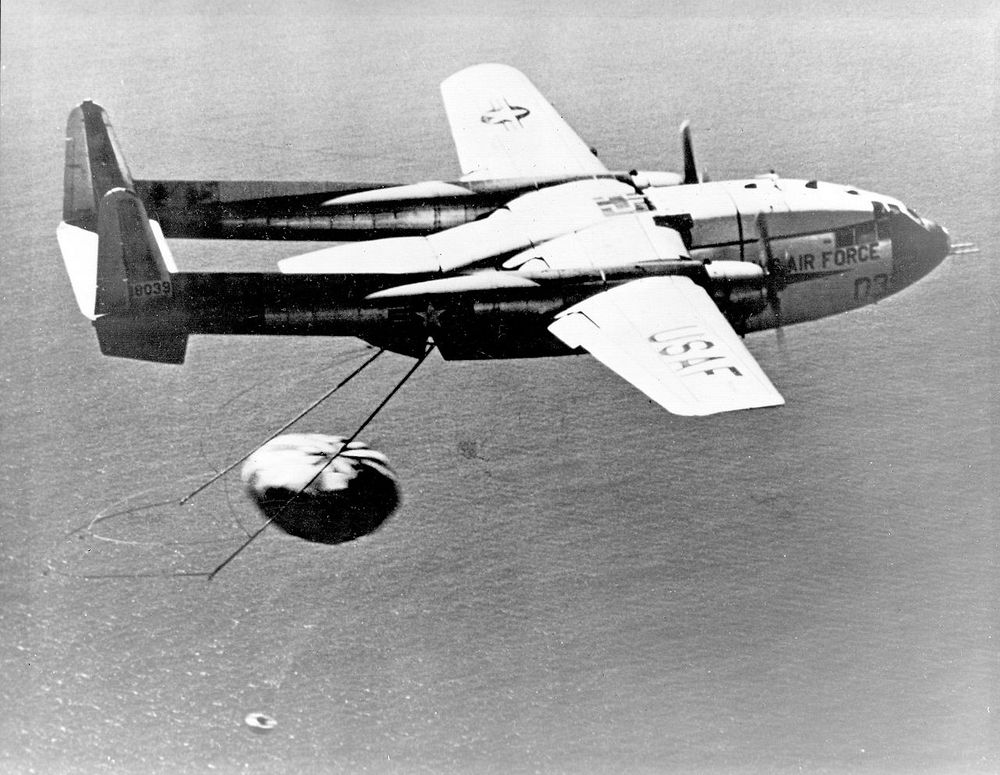
A U.S. Air Force airplane recovers a Corona Capsule returned from Space.
In October 1957, the Soviets launched the first artificial satellite Sputnik. Eight weeks later, engineers from the US Air Force, ARPA (the Advanced Research Projects Agency) and the CIA met and decided to build America’s first spy satellite called Corona. To disguise its true purpose, the top-secret program was given a cover name “Discoverer”, described as a scientific research program.
The technology used in the Corona program were state-of-the-art. Each Corona satellite used special 70 millimeter film manufactured by Eastman Kodak, and loaded on purpose-built cameras equipped with a telephoto lens of 610 mm focal length. The cameras, made by defense contractor Itek, were humongous. The lenses were 12 inch long and 7 inch in diameter, but the cameras were 5 feet long. Later models were larger still, at 9 feet in length. Early Corona satellite carried nearly 1.5 miles of film on board for each camera, but by the fifth generation of satellites this had doubled to nearly 3 miles per camera.

The first Corona satellites had a single camera, but a two-camera system was quickly implemented. Both cameras were tilted by 30 degrees, so that they could record stereoscopic images. This allowed cartographers to determine terrain relief. Later in the program, a third camera was added. These cameras could resolve images on the ground down to 40 feet. As the program progressed and the technology matured, the cameras were able to see details as small as 5 feet. Some missions achieved resolutions down to 3 feet, nearly at par with satellites today. This was partly because the satellites orbited much closer to the earth’s surface, at 100 miles. Some of the later missions orbited even lower, at 75 miles.
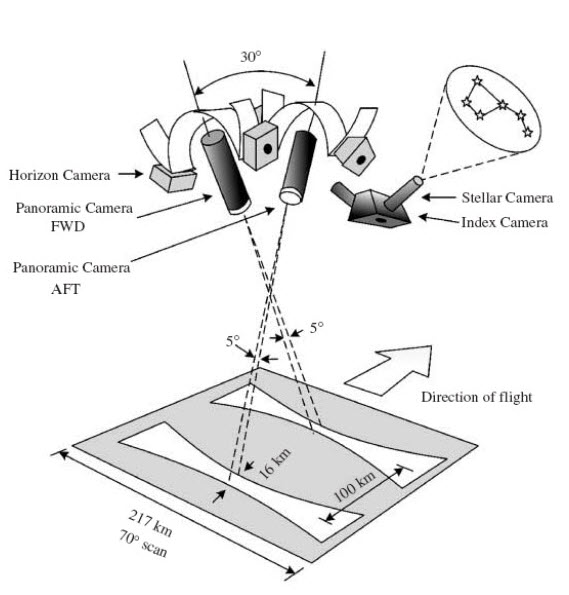
Stabilizing these cameras and keeping them focused on the surface of the earth while they zoomed overhead at 28,000 km per hour was no easy task. To calibrate the cameras from space, a giant grid of concrete crosses were built in the desert around Casa Grande, Arizona. Each of the 267 crosses were 60 feet across, and together they covered an area 16 miles square. About half of these markers still exist today.

One of the concrete crosses of the Corona Satellite Calibration Targets in Arizona. Image credit: Marine 69-71/Wikimedia Commons

Close-up view of the Corona Satellite Calibration Target. Image credit: Marine 69-71/Wikimedia Commons
The most bizarre part of the Corona program was how the photographs were delivered back to earth. Unlike digital photography, where images could be transmitted via radio directly from the satellites, the Corona program carried analog film that had to be developed and printed.
Engineers from General Electric devised a reentry capsule nicknamed “film bucket” that was jettisoned from the satellites. The buckets carrying the exposed film were equipped with heat shields that separated at 60,000 feet after the fiery entry was over, at which point parachutes were deployed. The capsule was not allowed to fall all the way to earth to prevent it from getting into wrong hands, but was plucked mid-air by a passing airplane. In case the aircraft missed, the capsule was designed to float. But the salt plugs in the capsule could hold for only two days after which they dissolved causing the capsule to sink. This was to prevent the enemy from capturing the film.
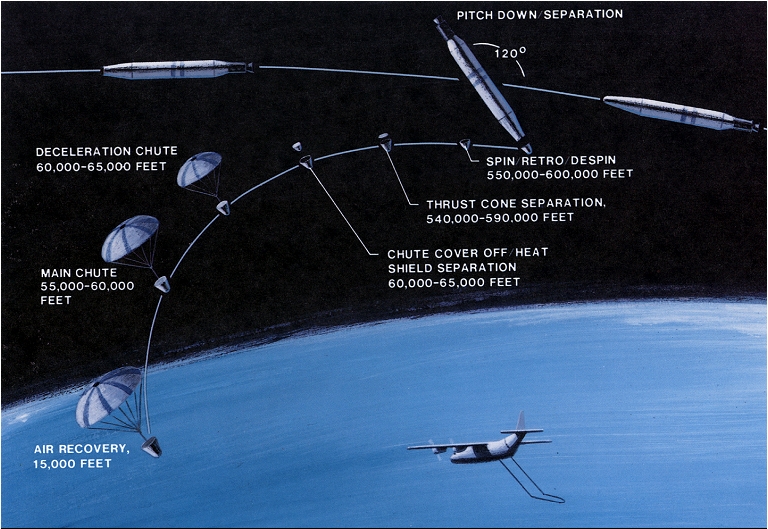
The Hollywood-esque retrieval procedure did not always work. One time the capsule fell in Venezuela, 500 miles south of Caracas in a remote rural region near the Columbian border. It was recovered by some farmers, who broke open the capsule and repurposed its various parts as household utensils and toys for children. The parachute lines were used as horse harness. Photos of the capsule, emblazoned with the words “United States” and “Secret”, appeared in a local newspaper.
After this embarrassing debacle, the Air Force stopped labelling their film buckets as “Secret”, and instead carried notices in eight languages promising the finder a reward if returned to the US.
The Corona program ran for thirteen years, from June 1959 to May 1972. During this period, the satellites collected over 800,000 images photographing 520 million square miles of foreign territory. These photos provided a wealth of intelligence, such as the location of Soviet missile complexes, each class of Soviet submarine, a complete inventory of fighters and bombers, the presence of Soviet missiles in Egypt to protect the Suez Canal, Soviet nuclear assistance in China, antiballistic missile defense inside the Soviet Union, atomic weapons storage sites, Chinese missile complexes, air defense batteries, surface ship fleets, command-and-control facilities, and the Plesetsk Missile Test Range north of Moscow. In short, the program was a staggering success.
The Corona program remained secret for two more decades, until President Bill Clinton ordered the details of the program to be declassified in 1995.
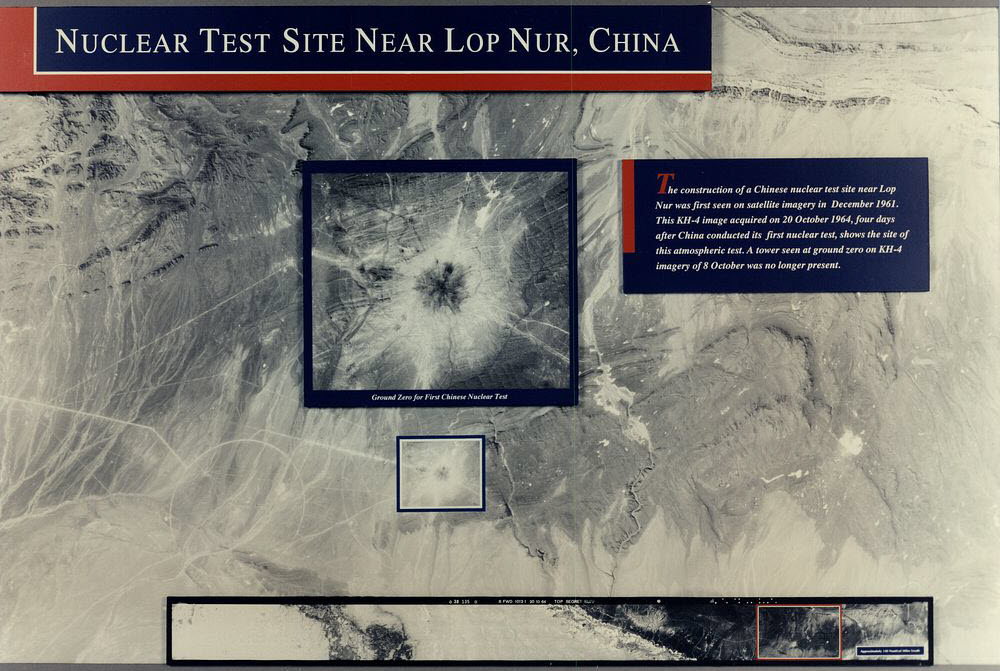
CORONA reconnaissance satellite photograph of the Lop Nur Nuclear Test Base in Xinjiang, China. The photograph was made on October 20, 1964, four days after China conducted its first nuclear test. Image credit: Smithsonian National Air and Space Museum

CORONA reconnaissance satellite photograph of a Soviet solid rocket motor production plant near Biysk, Russia, c.1968. Image credit: Smithsonian National Air and Space Museum

CORONA reconnaissance satellite photograph of Moscow taken on May 28, 1970. A detail shows the an enlargement of the Kremlin. Image credit: Smithsonian National Air and Space Museum
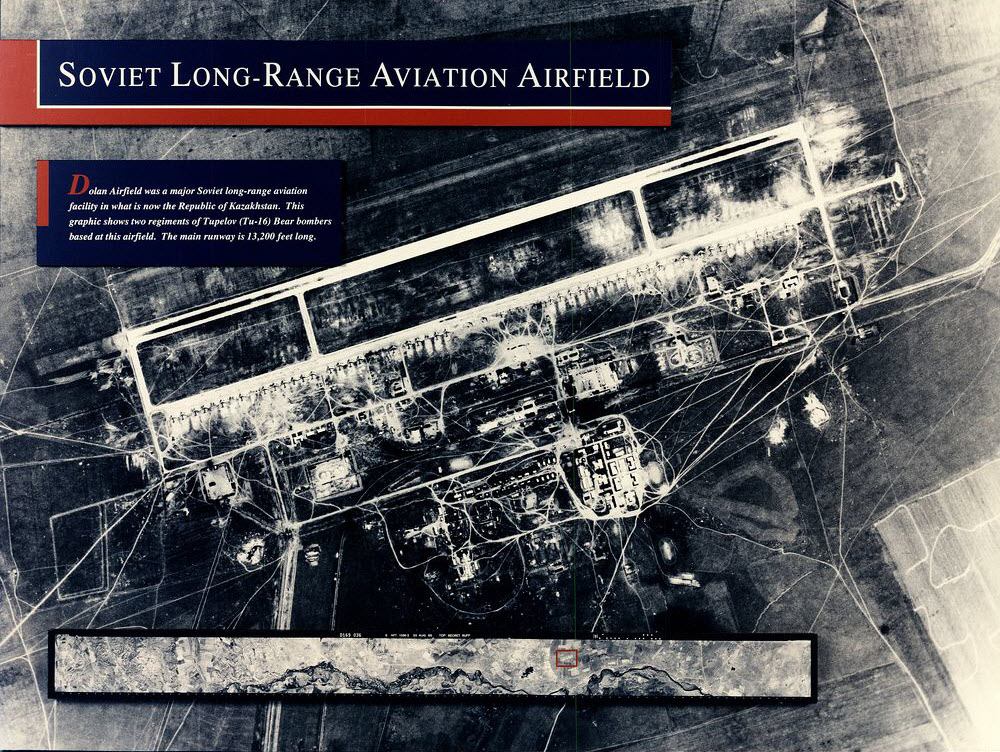
CORONA reconnaissance satellite photograph of Dolan Airfield, USSR (now Kazakhstan) taken c.1968. Visible in the photograph are two squadrons of Tupolev Tu-16 "Badger" bombers. Image credit: Smithsonian National Air and Space Museum



Comments
Post a Comment